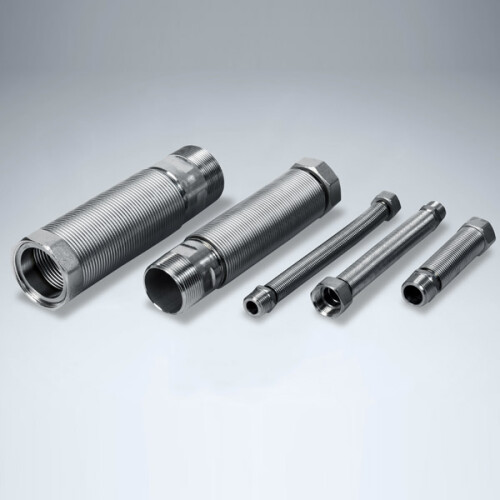Piping
Piping: the core of thermohydraulic systems
Piping is an essential component in any heating, cooling, and water supply system. It forms the network through which fluids and gases are transported, ensuring the efficient and safe operation of residential and industrial installations. From private homes to large industrial plants, piping plays a fundamental role in providing comfort, energy efficiency, and safety.
Types of piping
Piping used in thermohydraulic systems can be made from various materials, each offering specific characteristics in terms of resistance, durability, ease of installation, and cost. The main types include:
- Copper pipes: Copper is one of the most widely used materials for piping due to its excellent corrosion resistance, durability, and efficient heat conductivity. Copper pipes are commonly employed in heating and air conditioning systems, as well as for potable water distribution. Their ease of handling makes them ideal for complex installations, although material costs can be a limiting factor.
- Stainless steel pipes: Stainless steel is valued for its high corrosion resistance, especially in aggressive environments or when transporting particularly corrosive fluids. Stainless steel pipes are often used in industrial and commercial applications where durability and robustness are essential. Additionally, they can withstand high temperatures and pressures, making them ideal for high-performance heating systems.
- Plastic pipes (PVC, PE, PEX): Plastic pipes, including PVC (polyvinyl chloride), PE (polyethylene), and PEX (cross-linked polyethylene), are popular choices due to their lightweight structure, ease of installation, and corrosion resistance. PVC is widely used in water supply and drainage systems, while PEX is commonly employed in underfloor heating systems due to its flexibility and resistance to high temperatures. Lower costs compared to metals and the increasing quality of plastic materials have made them an increasingly common choice.
- Multilayer pipes: These pipes combine the advantages of both metal and plastic materials. Composed of an inner plastic layer (PE or PEX), an intermediate aluminum layer, and an outer plastic layer, multilayer pipes offer flexibility, lightness, and mechanical strength. They are particularly appreciated in heating and cooling systems, as well as for potable water distribution.
Piping: main applications
Piping is used in numerous sectors, each requiring specific technical and performance characteristics. In the residential sector, piping is essential for distributing hot and cold water, domestic heating, and drainage systems. The choice of material often depends on the installation environment, pressure, and temperature of the transported fluid.
In industrial installations, piping must withstand more severe conditions, including high pressure loads, extreme temperatures, and chemically aggressive environments. In these cases, materials such as stainless steel and copper are often preferred for their reliability and long-term durability.
Another important application is in the renewable energy sector, where piping is used to transport fluids in solar thermal and geothermal plants. Here, thermal efficiency and corrosion resistance are particularly crucial to ensure the longevity and operational efficiency of the system.












